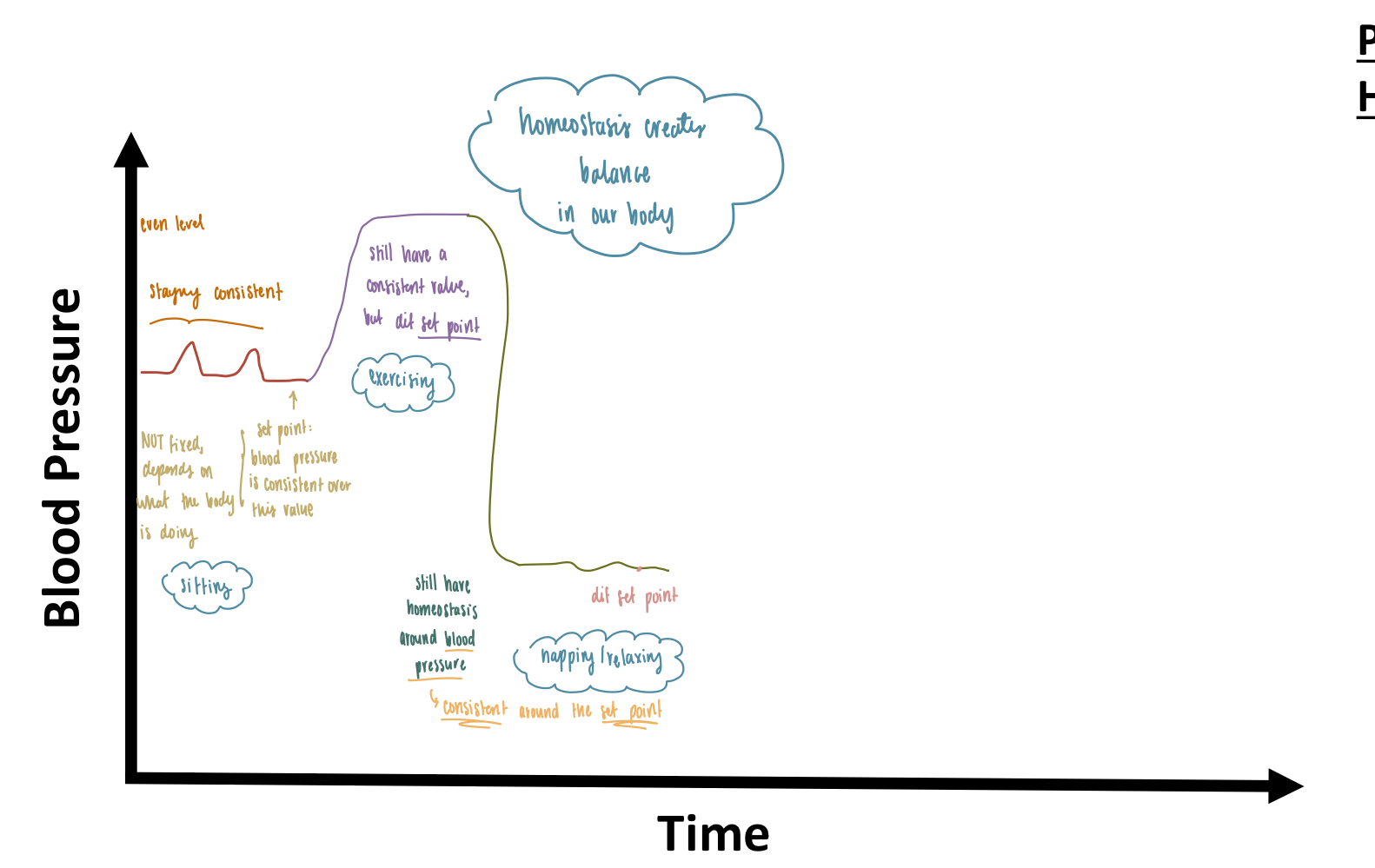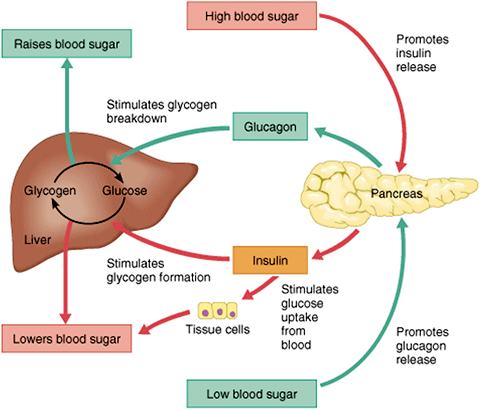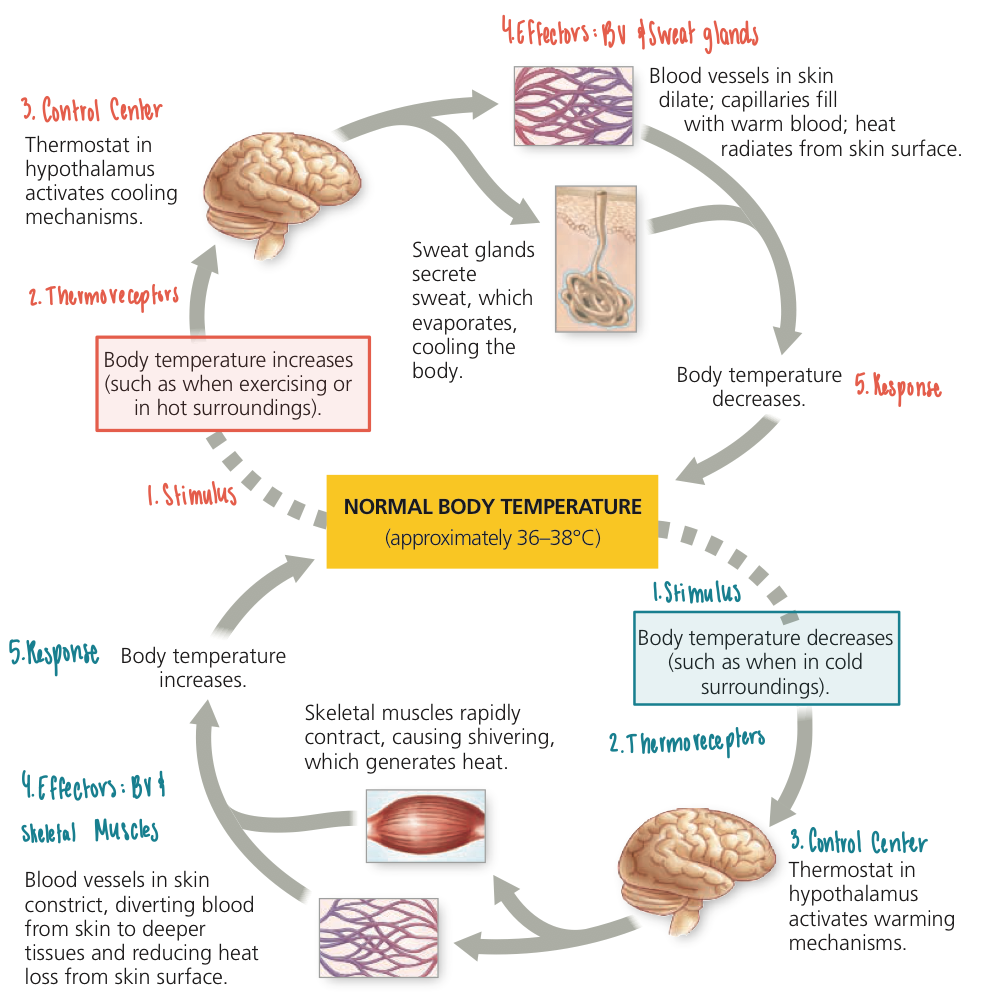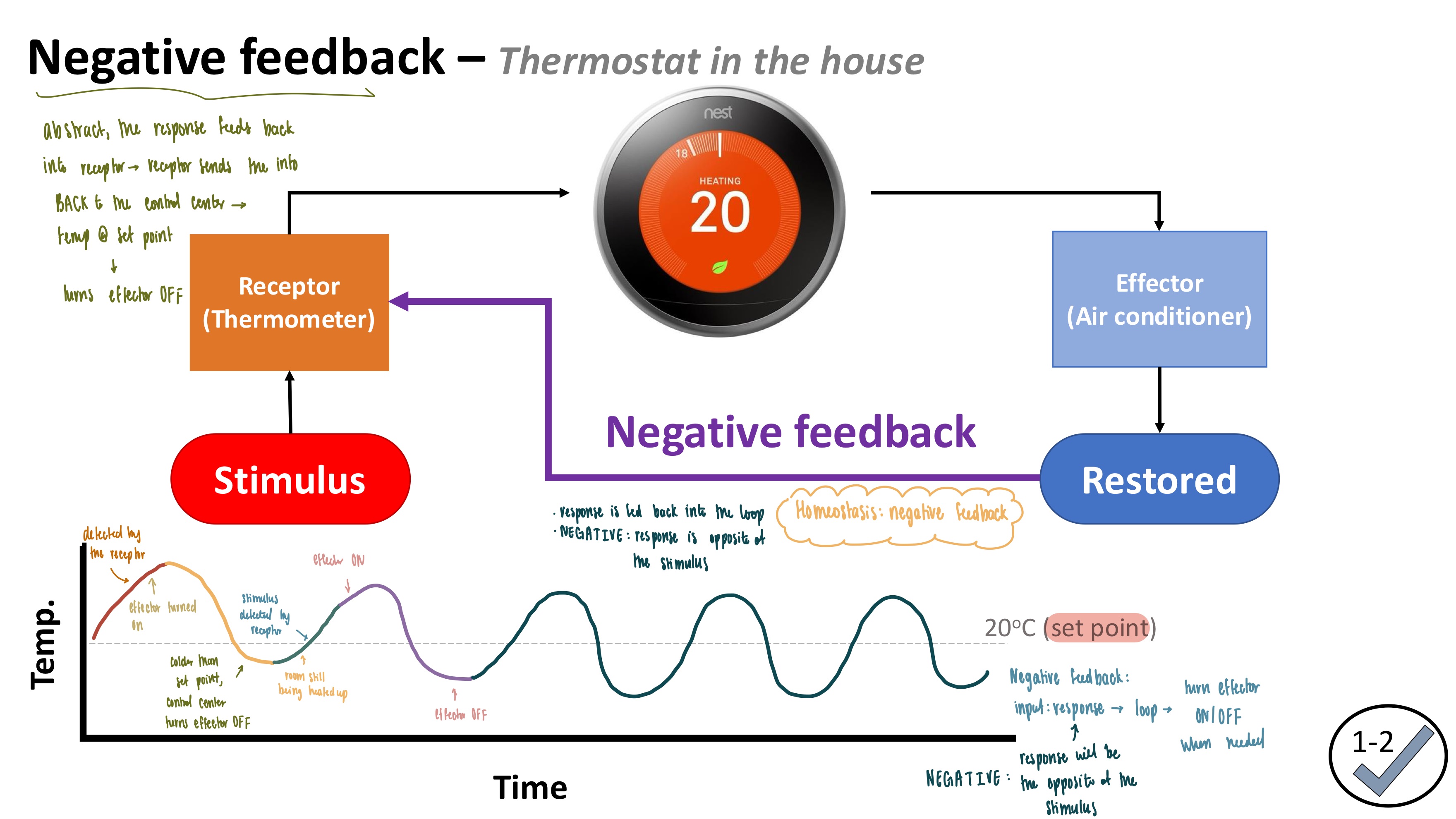BIO-249 Lecture Exam 1: Homeostatsis & Feedback Loops
1/10
There's no tags or description
Looks like no tags are added yet.
Name | Mastery | Learn | Test | Matching | Spaced |
|---|
No study sessions yet.
11 Terms
What is homeostasis?
What parameters/variables of the body are held “in balance” through homeostasis?
Homeostasis
State of balance in nearly everything
Physiological conditions stay close to a set point
Parameters
Blood Pressure
Heart Rate
“Energy Levels”
Calcium
Most chemicals

What is a set point?
How does a set point relate to homeostasis?
Set point: physiological value around which the normal range fluctuates
Normal range: restricted set of values that’s optimally healthy & stable
Deviations from the set point, which are detected by receptors, initiate a negative feedback loop for homeostasis
Stimulus Definition
Control Center Definition
Effector Definition
Response Definition
Stimulus: disrupts homeostasis/deviates from set point
Receptor: sensor that detects the stimulus & relays info to the control center
Control Center: the thinking structure; compares the value to the normal range
receives info from receptor → deciphers it → issues a command
Effector: action structure (organs & tissues) that creates an effect to reverse the stimulus
Response: opposite of the stimulus
Homeostatic control example (increase in blood sugar)
Stimulus: an increase in blood sugar
Receptor: receptors on pancreatic beta cells
detect an increase in blood sugar
Control Center: pancreatic beta cells
receive information from their receptors & communicate with the other cells in the body using insulin
Effector: pancreatic beta cells
respond to insulin by taking in sugar from the bloodstream
Response: decrease in blood sugar levels

What is a negative feedback mechanism?
Describe the negative feedback loop of body temperature regulation
Identify the stimulus, receptors, control center, effectors, & response
Negative Feedback Loop
mechanism that reverses the deviation from the set point
response is the opposite of the stimulus
maintains body parameters within their normal range
Body Temperature Regulation
Stimulus: changes in body temp
Receptor: thermoreceptors & sensory nerves
Control Center: hypothalamus
Effector:
Sweat glands: secrete sweat to cool down body temp
Skeletal muscles: break down ATP to generate heat/energy
Response: lower body temp/increase body temp

What is a positive feedback mechanism?
A mechanism that is used to rapidly accelerate an action, helps drive processes to completion

Compare & contrast positive & negative feedback
Negative Feedback
Response is the OPPOSITE of the stimulus
Response is fed BACK to the receptor to maintain homeostasis
Positive Feedback
Response rapidly amplifies the stimulus
Needs an external stimulus to end the loop

Which feedback mechanism is best used for homeostatic control?
Negative Feedback
Counterattacks deviations from the set point & maintains body stability
Does a positive feedback loop ever stop on its own?
How does a positive feedback loop stop?
NO it cannot stop on its own, needs an external stimulus
Blood clotting & childbirth
Describe how positive feedback works in delivering a baby
Pressure of the baby’s head against stretch sensors stimulate the uterus to contract, which increases the pressure against the cervix and increases the strength of the contractions until the baby is delivered


Positive Feedback Lactation Example
